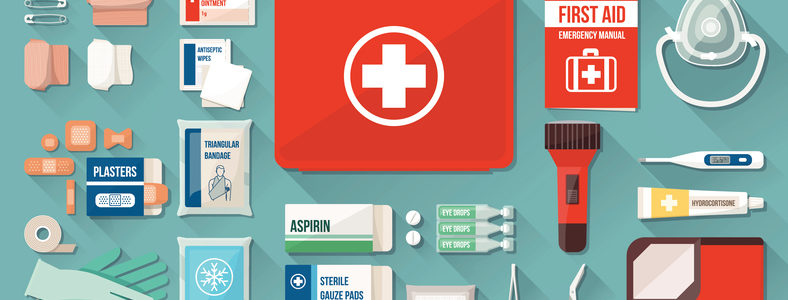Recently I wrote an article about First Aid and how it works on a workers comp policy. In it, I described what First Aid is and why it matters to you, as an employer with a workers comp policy. Today I want to update you on a law that went into effect on 1/1/2017 that clarifies how First Aid claims are to be treated.
First, to summarize First Aid, here’s what First Aid is, and I quote from California Labor Code Labor Code §5401(a):
… First aid means any one-time treatment, and any follow-up visit for the purpose of observation of minor scratches, cuts, burns, splinters, or other minor industrial injury, which do not ordinarily require medical care. This one-time treatment, and follow-up visit for the purpose of observation, is considered first aid even though provided by a physician or registered professional personnel. “Minor industrial injury” shall not include serious exposure to a hazardous substance as defined in subdivision (i) of Section 6302.
And here are some examples of First Aid:
- Using nonprescription medication at nonprescription strength
- Administration of tetanus immunizations
- Cleaning, flushing or soaking wounds on the surface of the skin
- Using wound coverings such as bandages, Band-Aids, gauze pads, etc.
- Using hot or cold therapy
- Using any non-rigid means of support, such as elastic bandages, wraps, non-rigid back belts, etc.
- Using temporary immobilization devices while transporting an accident victim (e.g. splints, slings, neck collars, back boards, etc.)
- Drilling of a fingernail or toenail to relieve pressure, or draining fluid from a blister
- Using eye patches
- Removing foreign bodies from the eye using only irrigation or a cotton swab
- Removing splinters or foreign material from areas other than the eye by irrigation, tweezers, cotton swabs or other simple means
- Using finger guards
- Using massages (physical therapy or chiropractic treatment are considered medical treatment for record keeping purposes)
- Drinking fluids for relief of heat stress
- X-Rays but only when no medical condition is identified that would require treatment beyond “first aid” as defined above.
I also have another chart you can check out here.
All right, now that we know what First Aid for workers comp is, the big question arises: what is the new law? OK, it’s not actually a “law” per se; it’s a procedural guideline created by the Workers Comp Insurance Rating Bureau (the WCIRB). The WCIRB is the organization that figures out what every employer’s Xmod is which means they set the rules about how claim data needs to be reported. The new procedural guideline is basically this: insurance companies must report all first aid claims regardless of who paid for them – the insurance company or the employer.
In the past, it wasn’t totally clear how First Aid incidents should be handled. The employer had the right to pay First Aid claims out of pocket, which would mean the claim wouldn’t be reported to the insurer. But then confusion could ensue because the medical providers that treat injured employees are always required to report all injuries to the insurer. This is a conflict: the employer doesn’t want to report the claim that he paid out of pocket and get charged for it, but the medical facility does want to report the claim because it knows it has to.
The new rule puts an end to that confusion: all First Aid claims must be reported. It also makes it a little simpler now: just report them all. At least one insurer that I know of is advising its policyholders NOT to pay out of pocket ever because the rates will be higher than if the claim goes through the system which allows the insurer to get lower medical provider network rates.
At the time of writing the first article on this, my advice to the employer was to not fight with the medical facility and let them report the injury to the insurer, but then communicate with the insurer letting them know that the claim should be categorized as First Aid. That would still be my advice today. Just talk to your insurer and ask how to handle First Aid claims. Get on a three way call with your agent and your insurer and figure it out.
So there it is: the new way to handle First Aid claims. A little simpler, in some ways not as good, but there is potential upside with the lower rates as described. Good luck with it all, employers, and God Speed.

 ELI GILLESPIE
ELI GILLESPIE




